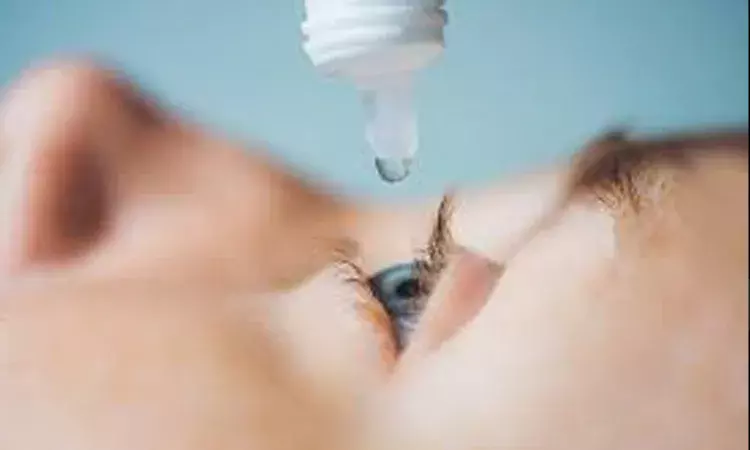- Home
- Medical news & Guidelines
- Anesthesiology
- Cardiology and CTVS
- Critical Care
- Dentistry
- Dermatology
- Diabetes and Endocrinology
- ENT
- Gastroenterology
- Medicine
- Nephrology
- Neurology
- Obstretics-Gynaecology
- Oncology
- Ophthalmology
- Orthopaedics
- Pediatrics-Neonatology
- Psychiatry
- Pulmonology
- Radiology
- Surgery
- Urology
- Laboratory Medicine
- Diet
- Nursing
- Paramedical
- Physiotherapy
- Health news
- Fact Check
- Bone Health Fact Check
- Brain Health Fact Check
- Cancer Related Fact Check
- Child Care Fact Check
- Dental and oral health fact check
- Diabetes and metabolic health fact check
- Diet and Nutrition Fact Check
- Eye and ENT Care Fact Check
- Fitness fact check
- Gut health fact check
- Heart health fact check
- Kidney health fact check
- Medical education fact check
- Men's health fact check
- Respiratory fact check
- Skin and hair care fact check
- Vaccine and Immunization fact check
- Women's health fact check
- AYUSH
- State News
- Andaman and Nicobar Islands
- Andhra Pradesh
- Arunachal Pradesh
- Assam
- Bihar
- Chandigarh
- Chattisgarh
- Dadra and Nagar Haveli
- Daman and Diu
- Delhi
- Goa
- Gujarat
- Haryana
- Himachal Pradesh
- Jammu & Kashmir
- Jharkhand
- Karnataka
- Kerala
- Ladakh
- Lakshadweep
- Madhya Pradesh
- Maharashtra
- Manipur
- Meghalaya
- Mizoram
- Nagaland
- Odisha
- Puducherry
- Punjab
- Rajasthan
- Sikkim
- Tamil Nadu
- Telangana
- Tripura
- Uttar Pradesh
- Uttrakhand
- West Bengal
- Medical Education
- Industry
Higher atropine concentrations effective for myopia treatment in younger kids: LAMP Study

China: Younger patients should be treated with a higher concentration atropine for slowing myopia development, finds a recent study. According to the study, published in the journal Ophthalmology, low concentration of atropine ophthalmic solution at 0.05%, 0.025%, and 0.01% is associated with poor treatment outcomes in younger age.
Among atropine concentrations studied, younger children required the highest concentration of 0.05% for achieving the same reduction in myopic progression as older children on lower concentrations.
Fen FenLi, Department of Ophthalmology and Visual Sciences, The Chinese University of Hong Kong, and colleagues investigated the effect of age of treatment and other factors on the treatment response to atropine in the Low-concentration Atropine for Myopia Progression (LAMP) study.
For the purpose, the researchers performed the secondary analysis from a randomized trial. It included 350 children (aged 4 to 12 years). The randomization was stratified by age and gender, originally assigned to receive 0.05%, 0.025%, 0.01% atropine, or placebo once daily in both eyes who completed 2 years of the LAMP study. In the second year, the placebo group was switched to 0.05% atropine group.
Change in spherical equivalent (SE) and axial length (AL) -- potential predictive factors for treatment response -- were evaluated by generalized estimating equations in each of treatment group separately over two years. The factors evaluated included age at treatment, gender, baseline refraction, parental myopia, time outdoors, diopter hours of near work, and treatment compliance.
The primary outcomes measures included factors associated with SE change and AL change over two years. Secondary outcome measures included associated factors during first year.
Key findings of the study include:
- In 0.05%, 0.025%, and 0.01% atropine group, younger age was the only factor associated with SE progression (coefficient=0.14, 0.15, and 0.20, respectively) and AL elongation (coefficient=-0.10, -0.11, and -0.12, respectively) over two years; the younger age, the poorer response.
- At each year of age from 4 to 12 across the treatment groups, higher-concentration atropine showed a better treatment response, following a concentration-dependent effect.
- In addition, the mean SE progression in 6-years-old children in 0.05% atropine was similar to that of 8-years-old in 0.025% atropine, and 10-years-old in 0.01% atropine.
- All concentrations were well tolerated at all age groups.
"Younger age is associated with poor treatment outcomes to low-concentration atropine at 0.05%, 0.025%, and 0.01%. Among atropine concentrations studied, younger children required the highest 0.05% concentration to achieve similar reduction in myopic progression as older children on lower concentrations," wrote the authors.
"Age effect on treatment responses to 0.05%, 0.025%, and 0.01% atropine: Low-concentration Atropine for Myopia Progression (LAMP) Study," is published in the journal Ophthalmology.
DOI: https://www.sciencedirect.com/science/article/abs/pii/S0161642021000014
Dr Kamal Kant Kohli-MBBS, DTCD- a chest specialist with more than 30 years of practice and a flair for writing clinical articles, Dr Kamal Kant Kohli joined Medical Dialogues as a Chief Editor of Medical News. Besides writing articles, as an editor, he proofreads and verifies all the medical content published on Medical Dialogues including those coming from journals, studies,medical conferences,guidelines etc. Email: drkohli@medicaldialogues.in. Contact no. 011-43720751


